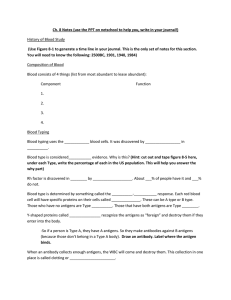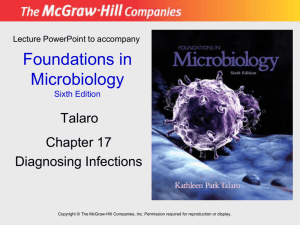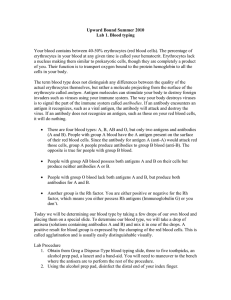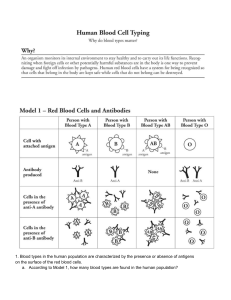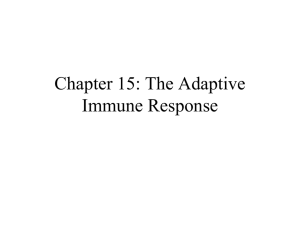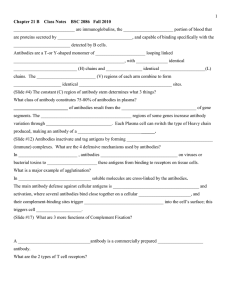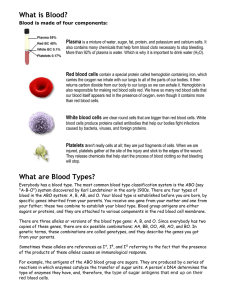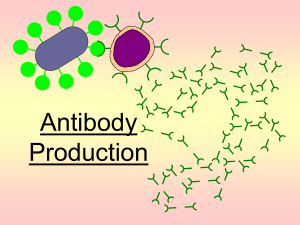LOYOLA COLLEGE (AUTONOMOUS), CHENNAI – 600 034
advertisement
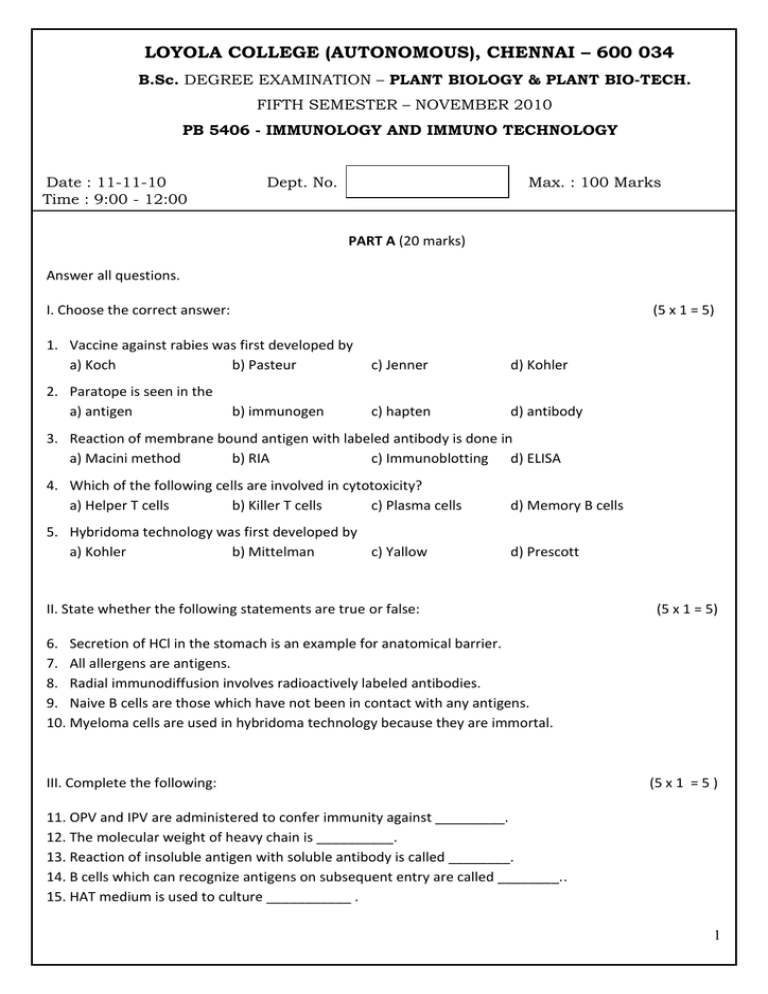
LOYOLA COLLEGE (AUTONOMOUS), CHENNAI – 600 034 B.Sc. DEGREE EXAMINATION – PLANT BIOLOGY & PLANT BIO-TECH. FIFTH SEMESTER – NOVEMBER 2010 PB 5406 - IMMUNOLOGY AND IMMUNO TECHNOLOGY Date : 11-11-10 Time : 9:00 - 12:00 Dept. No. Max. : 100 Marks PART A (20 marks) Answer all questions. I. Choose the correct answer: (5 x 1 = 5) 1. Vaccine against rabies was first developed by a) Koch b) Pasteur c) Jenner d) Kohler 2. Paratope is seen in the a) antigen c) hapten d) antibody b) immunogen 3. Reaction of membrane bound antigen with labeled antibody is done in a) Macini method b) RIA c) Immunoblotting d) ELISA 4. Which of the following cells are involved in cytotoxicity? a) Helper T cells b) Killer T cells c) Plasma cells d) Memory B cells 5. Hybridoma technology was first developed by a) Kohler b) Mittelman c) Yallow d) Prescott II. State whether the following statements are true or false: (5 x 1 = 5) 6. Secretion of HCl in the stomach is an example for anatomical barrier. 7. All allergens are antigens. 8. Radial immunodiffusion involves radioactively labeled antibodies. 9. Naive B cells are those which have not been in contact with any antigens. 10. Myeloma cells are used in hybridoma technology because they are immortal. III. Complete the following: (5 x 1 = 5 ) 11. OPV and IPV are administered to confer immunity against _________. 12. The molecular weight of heavy chain is __________. 13. Reaction of insoluble antigen with soluble antibody is called ________. 14. B cells which can recognize antigens on subsequent entry are called ________.. 15. HAT medium is used to culture ___________ . 1 IV. Answer the following, each in about 50 words: (5 x 1= 5) 16. Mention any two contribution of Landsteiner. 17. List any two features of IgM. 18. Define haemagglutination. 19. Define plasma cells. 20. What is serum? PART B Answer the following, each answer not exceeding 350 words. Draw diagrams wherever necessary: ( 5 x 7= 35) 21. a. Give an account of the contribution of Pasteur and Koch. (or) b. Write short notes on immunization schedule. 22. a. Explain briefly about antigens and their properties. (or) b. Explain the structure of a typical antibody molecule. 23. a. Give an account of immunoelectrophoresis. (or) b. Write short notes on immunodiffusion. 24. a. Discuss briefly about cytokines and their importance. (or) b. Write short notes on T lymphocytes. 25. a. What are polyclonal antibodies? Explain the method involved in their production. (or) b. Explain the methods involved in the production of antiserum. PART C Answer any three of the following, each answer not exceeding 1200 words. Draw diagrams wherever necessary: (3 x 15= 45) 26. Describe in detail about innate and adaptive immunity. 27. Explain in detail about immunoglobulins, their classification and properties. 28. Discuss in detail about immunoblotting technique. 29. Explain in detail about the organs of immune system. 30. Describe the steps involved in the production of monoclonal antibodies. ************************************* 2

